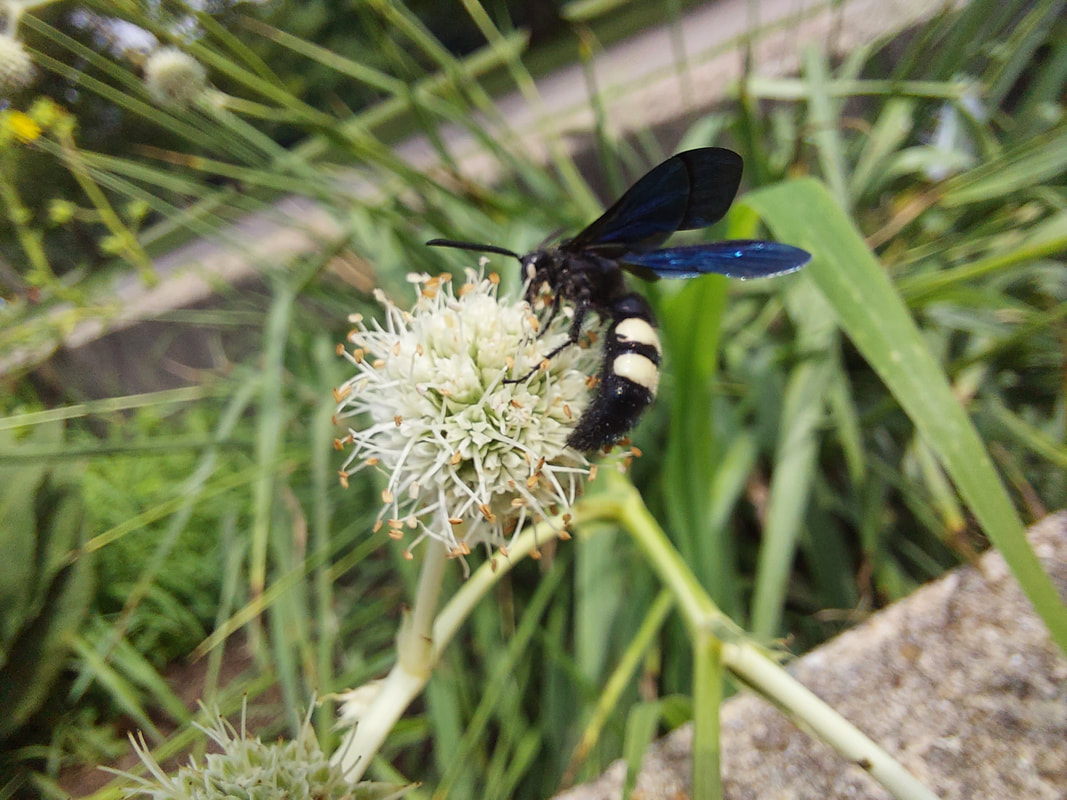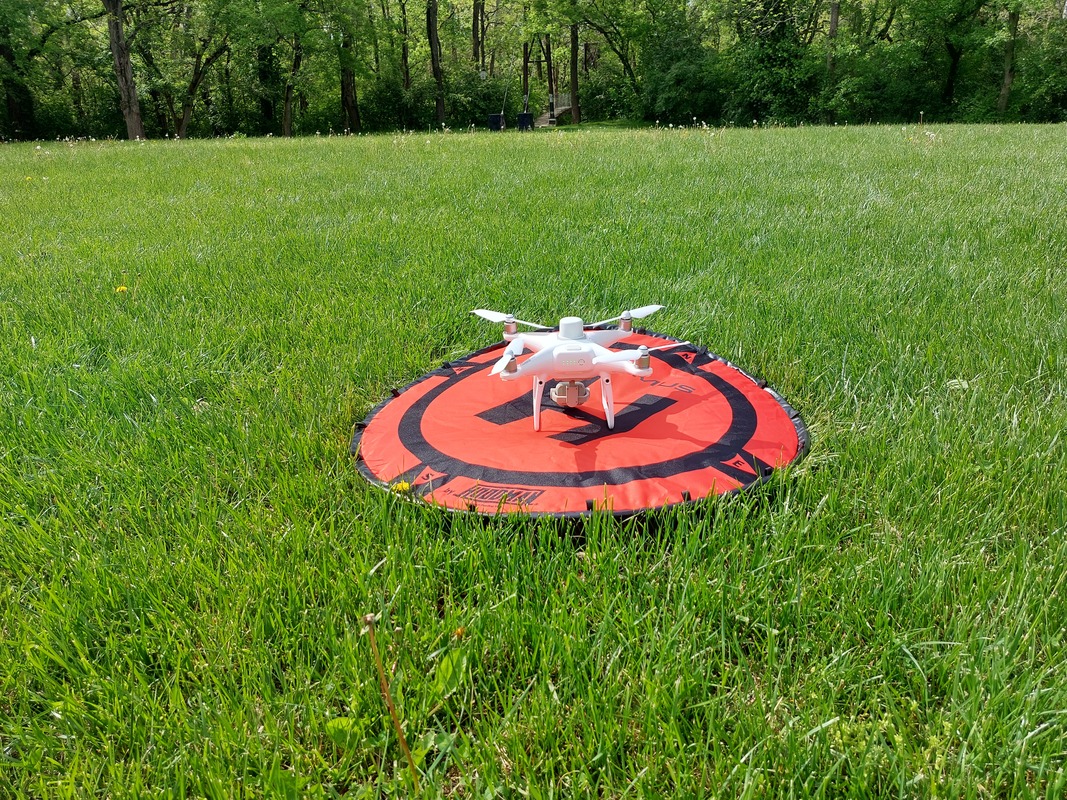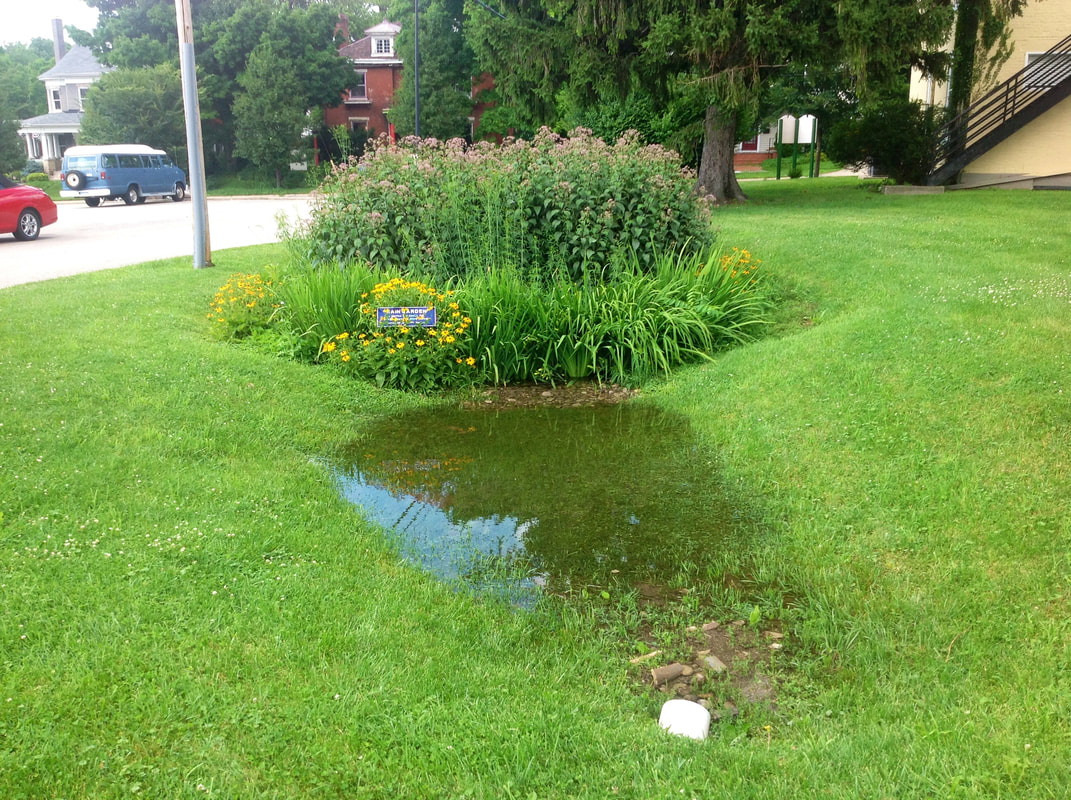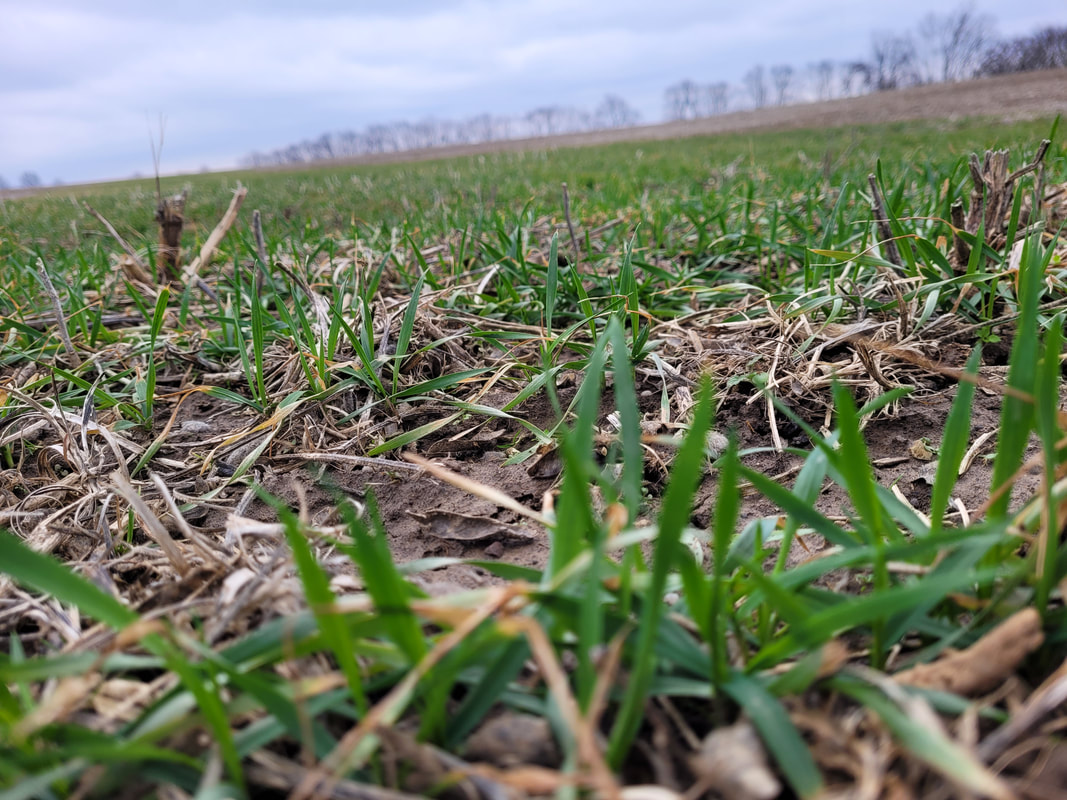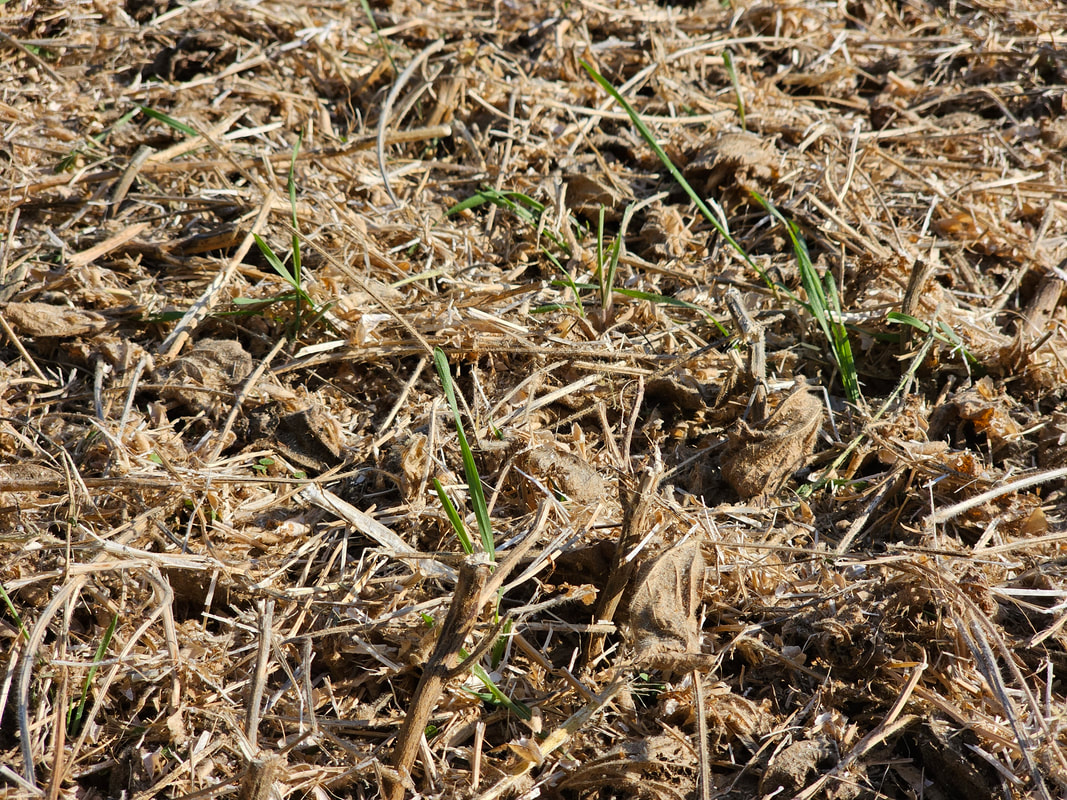|
Pet Waste Management
Does your pet poop? Of course he does! Do you always pick it up? We hope you do! This month, we talk about how pet waste negatively impacts the quality of our public health/local waters and what you can do to help. According to the U.S. Environmental Protection Agency, pet waste is a leading source of nutrient and bacteria pollution in urban streams and waterways. Scruffy might be cute and cuddly but his poop spreads zoonotic diseases (transmissible to humans) with ingredients like E. Coli, Giardia, Salmonella, Roundworms, Tapeworms, and more. When it rains, pet waste contaminates storm water which eventually makes its way to your local creek or lake. Considering that more than half of Ohio’s residents get their drinking water from surface water sources, it’s important to keep our water as clean as possible. Have you ever noticed your neighborhood pond or retention basin filled with algae? Decomposing pet waste also pollutes water with excess nutrients, causing algae to bloom out of control and harm other aquatic life. Some communities in Warren County have pet waste management ordinances. For example, the City of Lebanon considers a violation of §505.08 Removal of Dog Excrement (Ord. 6569) a minor misdemeanor and can fine up to $150. Can pet waste be used as fertilizer? Dog poo in its raw form is NOT a fertilizer. Due to a high-protein diet, dog poop is acidic and will kill your lawn and plants. However, a 2005 study by the USDA and Fairbanks Soil & Water Conservation District found that dog waste from healthy individuals is a safe mulch or soil additive for landscaping (NOT for human consumption) when composted properly. The process involves mixing waste with carbon-rich materials, paying attention to air flow and moisture, and maintaining a temperature of at least 145°F for several days. Please note- “Cats may carry parasites that are harmful to human fetuses. We do not recommend adding cat waste or cat litter to your compost.” Pro-Tips
Thanks for being a responsible pet owner!
0 Comments
Did you know that you can thank a pollinator for 1 in 3 bites of food! Pollinators help our food supply to be plentiful and enable us to grow fruits and vegetables! Warren County SWCD believes it is important to help our pollinators! Here are some tips from USDA that will help keep our pollinators plentiful!
Additional Resources: USDA - The Importance of Pollinators - https://www.usda.gov/peoples-garden/pollinators Pollinator Partnership - https://www.pollinator.org/pollinators Xerces Society - https://xerces.org/ OSU Bee Lab - https://u.osu.edu/beelab/ Pollinator Pathway - https://www.pollinator-pathway.org/ For more information regarding pollinators, Warren County Soil and Water Conservation District programs and/or technical assistance on water or soil questions, visit http://warrenswcd.com or call, 513-695-1337. As the technology for Unmanned Aerial Vehicles (UAVs) becomes increasingly more powerful and affordable, it is beginning to have an increased role in the agriculture world. UAVs, or more commonly drones, can be used for a variety of purposes, from monitoring crops, herds, and infrastructure to applying resources where they are most needed, and they will only continue to be more useful and important in the years to come. Here are a look at a few ways that agricultural producers are beginning to utilize drones in their businesses.
Monitoring Many drones with optical sensors can be very useful in remote monitoring of fields or rangeland. Having an aerial view of a field can give a producer the chance to see patterns that are not readily available from the ground, such as damage to crops from a storm or where plants are not growing as healthily. Additional optical sensors such as near infrared can be used to create normalized difference vegetation index (NDVI) imagery of crops, giving a detailed and precise measurement of crop health and showing where water or nutrients can be best applied. Drones can also be used to monitor and track herds or check for damage to fence rows or other infrastructure much more quickly than it would take to drive or walk a route, saving time and resources for routine tasks. Application Some drones are equipped to carry payloads and can be used in the precise application of resources. If a part of a field is not receiving enough water or needs to receive more fertilizer, then a drone can be used to deliver the precise amount of nutrients exactly where it is most needed to save on cost for the producer. Conversely, drones can also be used to deliver payloads of pesticide or herbicide where there is active damage to crops. Repeatability and Autonomy Many drones today come with software that allows the pilot to preplan flight missions and save them for future use. This means that the drone can be flown on the exact same path and perform the exact same actions whenever needed. This frees up the pilot from having to manually control the drone each flight and allows for high accuracy in repeating tasks. This also allows for repeated missions to collect the same data over multiple flights, an invaluable resource when comparing such things as the stages of construction of a conservation practice or routinely monitoring field health during the growing season. References https://nebraskacorn.gov/cornstalk/sustainability/four-ways-drones-are-used-in-agriculture/ https://www.tntech.edu/news/releases/22-23/class-demonstrates-variety-of-uses-for-drones-in-agriculture.php What does it mean to make your home green for stormwater? Green stormwater practices around your home use plants, soils, and other elements to manage water quality and mimic the natural water cycle. Green stormwater practices retain, detain, filter, harvest, and infiltrate stormwater runoff to create healthier urban environments.
Incorporating green infrastructure provides many benefits such as improving water quality by removing pollutants, habitat preservation for native plants and animals, decreasing urbanization stream impacts, and overall enhancement of neighborhood aesthetics. The following is a list of management practices that landowners can incorporate on their own property to help control and keep stormwater clean. (Sources: Penn State Extension, United States Environmental Protection Agency)
For more information regarding green infrastructure for the home, Warren County Soil and Water Conservation District programs and/or technical assistance on water or soil questions, visit http://warrenswcd.com or call, 513-695-1337. The inclusion of cover crops in a cash crop rotation can have huge benefits to soil fertility and productivity, while at the same time protecting waterways from excess nutrient runoff.
Nitrogen Production Cover crops, specifically legumes, can create plant available nitrogen (NH3) from nitrogen gas (N2) which is readily found in the Earth’s atmosphere. Legumes create nitrogen through a symbiotic relationship with the bacteria, Rhizobium. Rhizobia infects the legumes root hairs; the bacteria receive its required sugars and vital nutrients while the host legume receives the excess plant available nitrogen. It is estimated that one-half of the NH3 created becomes available to the subsequently planted crop, approximately 1-2 months after the legume has been terminated. Nutrient Scavenging A common concern in modern agriculture both by farmers and water quality experts is the amount of applied nutrients that are left on the field after cash crops have been harvested. In a typical cash crop rotation, crop ground can lay fallow for several months giving nutrients the correct conditions to rapidly exit the field. In the scenario where a cover crop is established rapidly after or even before harvest, these leftover nutrients in the soil are taken up by the cover crop. Nutrients are safely stored until the cover crop is terminated and the nutrients can again be made available for a cash crop or remain as organic matter. This both reduces the amount of excess nutrients entering waterways, but also keeps farmer’s dollars (spent on fertilizer) in the field where it is an asset for future cash crops. Soil Builder – Compaction Breaker Cover crops also stand to improve soil quality and composition. Most notably the life cycle of a cover crop dictates that it is not harvested at termination. In this scenario the organic matter from the terminated crop all remains in the field and over time will increase the amount of organic matter of the top soil. Organic matter is an important aspect of soil health; it directly correlates to fertility in that a nominal amount of organic matter will: provide food for the soil’s microbial ecosystem, improve water infiltration and holding capacity, and enhance its ability to hold onto and supply nutrients to growing crops. Specific cover crops can also be a vital tool against compaction. The ever-increasing size of agricultural machinery is cause for concern regarding the compaction of productive soils. Cover crops which have deep roots can penetrate deep into the ground, improving soil permeability, which in turn increases water infiltration and aeration. Additionally, specific cover crops which have large taproots can break through hard pans and compacted layers of soil. This creates macropores for future cash crop root growth. Erosion Prevention Perhaps the most well-known benefit of cover cropping is the claim that planting a cover crop reduces erosion. The crop is physically “covering” the soil and shields it from both wind and water erosion. A 6mm raindrop is traveling up to 20 mph when it impacts the surface. The drops impact on the soil displaces soil particles and starts the process of erosion. Shielding bare soil with a cover crop keeps soil in place and retains the structure of the topsoil. Live roots along waterways and areas that carry water during heavy rains also help keep soil aggregates stationary during wet season rains. Additional Benefits Cover crops can provide weed suppression benefits. This is typically done by out competing or overshading growing weeds. Additionally, some species of cover crops have the ability to release substances and chemically inhibit the growth of surrounding plants (i.e. cereal rye, sunflowers and buckwheat). Cover crops if managed properly and planned accordingly can also provide grazing and forage opportunities to growers who also manage herds of livestock. Program Opportunity: To learn more about the benefits and types of cover crops for southwest Ohio, please join the Warren County Soil and Water Conservation District for the annual Agriculture Conservation Breakfast on February 24th from 8:30AM-11AM at the Countryside YMCA Events Center, 1699 Deerfield Road, Lebanon. This program is free, but registration is required. To register, please go to warren.swcd.com or call, 513-695-1337. Additional Resources: Rain or Shine (https://open.library.okstate.edu/rainorshine/chapter/5-3-raindrop-impact/) Cover Crop Farmers of Southwest Ohio (https://clermontswcd.org/wp-content/uploads/sites/23/2017/12/covercropfarmers.pdf) Cover Crops for Southwest Ohio (https://fairfieldswcd.org/wp-content/uploads/2017/02/SWOhioCover-CropBooklet.pdf) Ohio Cover Crops (https://cfaes.osu.edu/features/ohio-cover-crops) |
Details
Warren County SWCD Staff BlogA blog to keep you informed on all the latest news at Warren County SWCD and in the conservation world. Archives
May 2024
Categories
All
|
|
|
Contact:PHONE: (513) 695 - 1337
EMAIL: [email protected] HOURS: Monday - Friday 7:30am - 4:00pm (except holidays) Connect:Warren County Soil & Water Conservation District Copyright © 2016
Warren SWCD Privacy Notice. Emails are serviced by Constant Contact. Constant Contact's Privacy Notice. |

